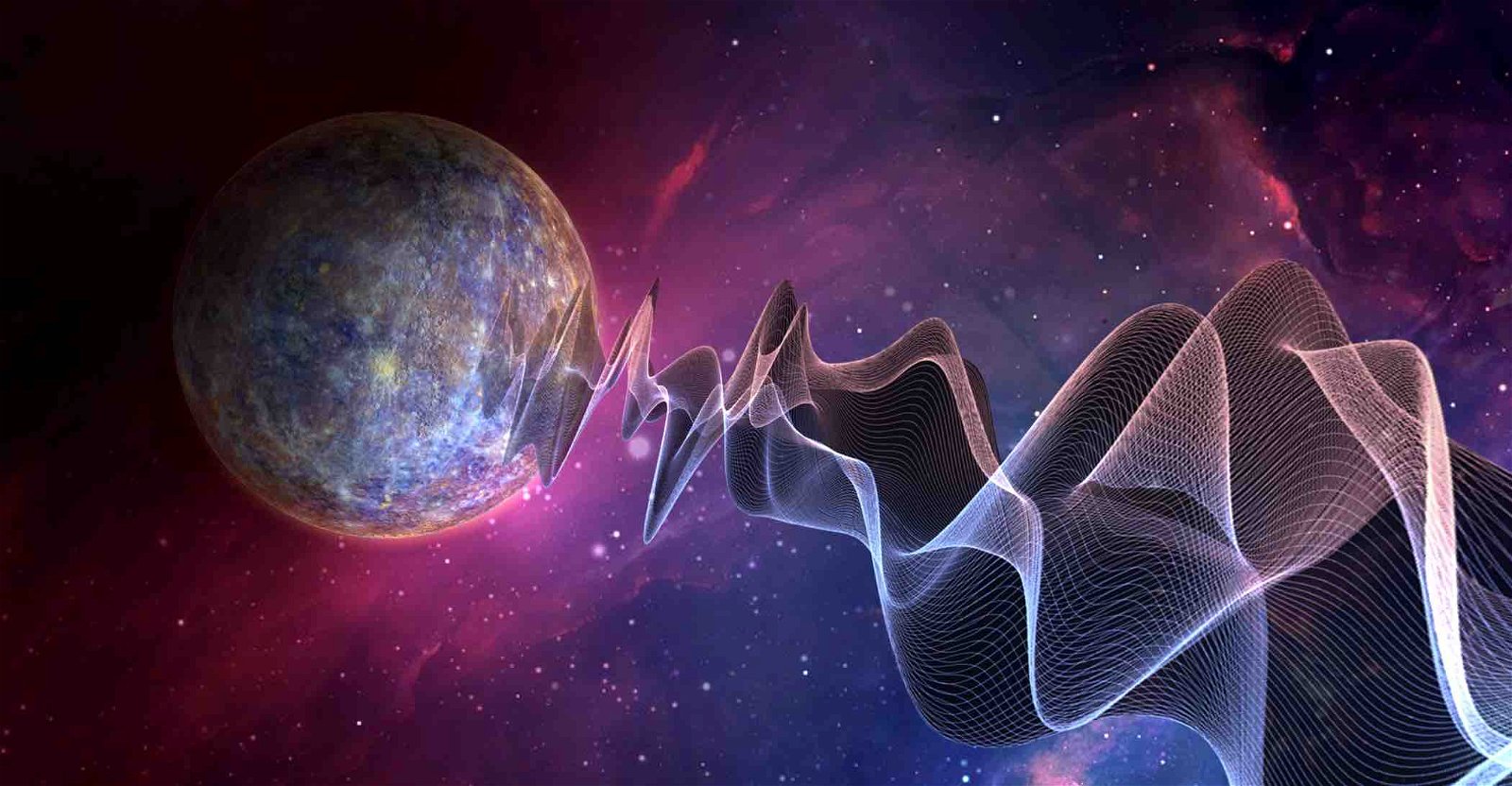An international team of researchers says a phenomenon that scientists liken to a cosmic chorus of spacey chirps and whistles has been detected emanating from Mercury for the first time, known as chorus waves.
The phenomenon is the result of electromagnetic emissions that occur in the magnetospheres of planets and are among the most common forms of natural plasma waves that occur in the outer regions of the magnetic fields of planets like Earth.
Driven by the occurrence of geomagnetic storms, these emissions are one of the main drivers of the scattering of electrons across a planet’s magnetosphere, which produces aurorae. However, the unique frequencies of these emissions also cause them to have an eerie, almost musical quality when heard by the human ear.
Although chorus waves have been detected in the magnetospheres of several planets in our solar system, they had not yet been observed around Mercury… until now.
According to new research led by Mitzunori Ozaki with the Graduate School of Natural Science and Technology at Kanazawa University in Kanazawa, Japan, these natural electromagnetic emissions have now been detected for the first time around our solar system’s “Swift Planet.”
Mercury is notoriously difficult to study with probes due to the complications that arise from attempting to enter the quickly moving planet’s orbit, which is further hampered by the intense heat caused by its proximity to the Sun.
Following the Mariner 10 probe launched in November 1973, no space probes had returned to study Mercury for several decades. However, new measurements collected by the BepiColombo/Mio spacecraft, part of a joint effort between the European Space Agency (ESA) and the Japan Aerospace Exploration Agency (JAXA),
The BepiColombo mission features a pair of satellites, the Mercury Planetary Orbiter (MPO) and Mio (Mercury Magnetospheric Orbiter, MMO), which were simultaneously launched on October 20, 2018. The mission’s focus areas include studies of Mercury’s magnetosphere, as well as the planet’s structural properties both on its exterior and within.
Although past instrumental surveys of Mercury were not sensitive enough to detect the presence of chorus waves, Ozaki and the team of French and Japanese scientists behind a new study published in Nature Astronomy now report the first “direct probing of chorus waves in the localized dawn sector during the first and second Mercury flybys by the BepiColombo/Mio spacecraft.”
The research team reports that search coil magnetometers aboard Mio were able to successfully record chorus events at dawn “while no clear chorus activity was observed in the night sector.”
Based on simulations produced with the data from the spacecraft that focused on the region near Mercury’s magnetic equator, thereby allowing the maximum linear wave growth potential, the team says regional differences in the detection of chorus waves around Mercury could arise from the variances in the planet’s magnetic field which may impact the wave generation process.
The team says that this first observational evidence of chorus waves obtained by Mio during Mercury flybys prompts additional future observations and more ambitious ones that could potentially include probing waveform data during future flybys Mio will perform, as well as studies during the science phase of the mission which follows final orbital insertion, which is scheduled to occur sometime in 2025.
“This observational evidence is crucial for understanding the energetic electron dynamics of the localized dawn sector of Mercury’s magnetosphere,” the team reports in their paper, saying that further investigations into chorus waves may help scientists better understand Mercury’s electron dynamics.
The paper, “Whistler Mode Waves in Mercury’s Magnetosphere Observed by BepiColombo/Mio,” appeared in the journal Nature Astronomy.
Micah Hanks is the Editor-in-Chief and Co-Founder of The Debrief. He can be reached by email at micah@thedebrief.org. Follow his work at micahhanks.com and on Twitter: @MicahHanks.

